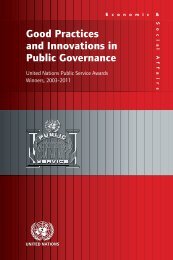a-collection-of-research-articles-on-the-medical-potential-of-cow-urine
a-collection-of-research-articles-on-the-medical-potential-of-cow-urine
a-collection-of-research-articles-on-the-medical-potential-of-cow-urine
You also want an ePaper? Increase the reach of your titles
YUMPU automatically turns print PDFs into web optimized ePapers that Google loves.
Chawda Hiren et al.<br />
Methodology<br />
The study was c<strong>on</strong>ducted in Animal<br />
room, Department <str<strong>on</strong>g>of</str<strong>on</strong>g> Pharmacology,<br />
Government Medical College, Bhavnagar,<br />
Gujarat, after approval from <strong>the</strong><br />
Instituti<strong>on</strong>al Animal Ethics Committee <str<strong>on</strong>g>of</str<strong>on</strong>g><br />
<strong>the</strong> same institute. The baseline blood<br />
sample was collected from a lateral<br />
saphenous vein <str<strong>on</strong>g>of</str<strong>on</strong>g> <strong>the</strong> hind paw <str<strong>on</strong>g>of</str<strong>on</strong>g> each<br />
guinea pig in overnight fasting state.<br />
Blood samples were sent to Clinical<br />
Biochemistry Laboratory <str<strong>on</strong>g>of</str<strong>on</strong>g> our institute<br />
which is accredited by Nati<strong>on</strong>al<br />
Accreditati<strong>on</strong> Board for Testing and<br />
Calibrati<strong>on</strong> Laboratories (NABL), for <strong>the</strong><br />
serum lipid pr<str<strong>on</strong>g>of</str<strong>on</strong>g>ile, liver and cardiac<br />
enzymes. Animals were separated into<br />
groups as menti<strong>on</strong>ed above. Throughout<br />
<strong>the</strong> study period in each group, diet was<br />
given according to <strong>the</strong> respective group<br />
diet plan. During <strong>the</strong> last 30 days <str<strong>on</strong>g>of</str<strong>on</strong>g> <strong>the</strong><br />
experiment, animals <str<strong>on</strong>g>of</str<strong>on</strong>g> group I and II were<br />
given distilled water daily, animals <str<strong>on</strong>g>of</str<strong>on</strong>g><br />
group III, IV and IV were given a lower<br />
dose <str<strong>on</strong>g>of</str<strong>on</strong>g> CUA, higher dose <str<strong>on</strong>g>of</str<strong>on</strong>g> CUA and<br />
rosuvastatin (1.5 mg/kg), respectively.<br />
Distilled water, CUA and rosuvastatin<br />
calcium were given orally by gavages<br />
feeding tube in a daily basis <strong>on</strong> mornings<br />
in fasting state to ensure maximum<br />
absorpti<strong>on</strong>. Animals <str<strong>on</strong>g>of</str<strong>on</strong>g> all groups were<br />
sacrificed after blood <str<strong>on</strong>g>collecti<strong>on</strong></str<strong>on</strong>g> from <strong>the</strong><br />
lateral saphenous vein in <strong>the</strong> overnight<br />
fasting stat at <strong>the</strong> end <str<strong>on</strong>g>of</str<strong>on</strong>g> 60 days.<br />
Bloodsmples were sent to labratory for <strong>the</strong><br />
analysis <str<strong>on</strong>g>of</str<strong>on</strong>g> <strong>the</strong> serum lipid pr<str<strong>on</strong>g>of</str<strong>on</strong>g>ile, liver<br />
and cardiac enzymes. We obtained <strong>the</strong><br />
liver and kidney from each animal <str<strong>on</strong>g>of</str<strong>on</strong>g> <strong>the</strong><br />
five groups for histopathological analysis,<br />
which was d<strong>on</strong>e by senior faculty from <strong>the</strong><br />
Pathology department <str<strong>on</strong>g>of</str<strong>on</strong>g> our institute.<br />
Serum lipid pr<str<strong>on</strong>g>of</str<strong>on</strong>g>ile<br />
The serum levels <str<strong>on</strong>g>of</str<strong>on</strong>g> triglycerides, total<br />
cholesterol and high density lipoprotein<br />
cholesterol (HDL-C) and Low density<br />
lipoprotein cholesterol (LDL-C) were<br />
analyzed by GPO PAP METHOD, CHOD<br />
PAP METHOD, IMMUNOINHIBITION<br />
and ENZYME SELECTIVE methods,<br />
respectively. Very low density lipoprotein<br />
cholesterol (VLDL-C) was calculated by<br />
<strong>the</strong> Friedwald method (Friedewald et al.,<br />
1972) as well as <strong>the</strong> ratio <str<strong>on</strong>g>of</str<strong>on</strong>g> <strong>the</strong> total<br />
cholesterol and HDL-C.<br />
Evaluati<strong>on</strong> <str<strong>on</strong>g>of</str<strong>on</strong>g> liver and cardiac enzymes<br />
Liver functi<strong>on</strong> was evaluated by serum<br />
alanine aminotransferase (ALT), aspartate<br />
aminotransferase (AST), and alkaline<br />
phosphatase (AP) levels. Cardiac injury<br />
was assessed by measuring <strong>the</strong> serum level<br />
<str<strong>on</strong>g>of</str<strong>on</strong>g> creatine kinase MB subunit (CK-MB)<br />
and lactate dehydrogenase (LDH). ALT<br />
and AST were examined by UV KINETIC<br />
method and serum alkaline phosphatase<br />
was determinedby PNP AMP KINETIC<br />
method. LDH and CK-MB were analyzed<br />
by IMMUNO-INHIBITION and UV<br />
KINETIC, respectively.<br />
Effect <str<strong>on</strong>g>of</str<strong>on</strong>g> CUA <strong>on</strong> <strong>the</strong> weight <str<strong>on</strong>g>of</str<strong>on</strong>g> <strong>the</strong><br />
animals<br />
Weighing <str<strong>on</strong>g>of</str<strong>on</strong>g> each animal in all groups<br />
was d<strong>on</strong>e before <strong>the</strong> start <str<strong>on</strong>g>of</str<strong>on</strong>g> <strong>the</strong> study and<br />
also at <strong>the</strong> end <str<strong>on</strong>g>of</str<strong>on</strong>g> 60 days to rule out any<br />
effect <str<strong>on</strong>g>of</str<strong>on</strong>g> CUA <strong>on</strong> <strong>the</strong> weight <str<strong>on</strong>g>of</str<strong>on</strong>g> <strong>the</strong> guinea<br />
pig.<br />
Histological analysis<br />
The liver and kidney were isolated,<br />
cleaned, dried, and fixed at 10% neutral<br />
buffer formalin followed by paraffin<br />
embedding and stained with haematoxylin<br />
and eosin (H&E) dye. All<br />
histopathological slides were coded and<br />
evaluated by a pathologist blindly without<br />
knowledge <str<strong>on</strong>g>of</str<strong>on</strong>g> <strong>the</strong> groups. Scalinggrades 0,<br />
1, 2, 3 and 4 were given for no change,<br />
slight, mild, moderate and severe changes,<br />
respectively regarding <strong>the</strong>severity<br />
assessment <str<strong>on</strong>g>of</str<strong>on</strong>g> histopathological results.<br />
Statistical analysis:<br />
All parameters were expressed as<br />
Mean±standard error <str<strong>on</strong>g>of</str<strong>on</strong>g> mean (S.E.M.).<br />
One-way Analysis <str<strong>on</strong>g>of</str<strong>on</strong>g> Variance (ANOVA)<br />
followed by Tukey-Kramer Multiple<br />
comparis<strong>on</strong> test was used to compare <strong>the</strong><br />
AJP, Vol. 4, No. 5, Sep-Oct 2014 356









